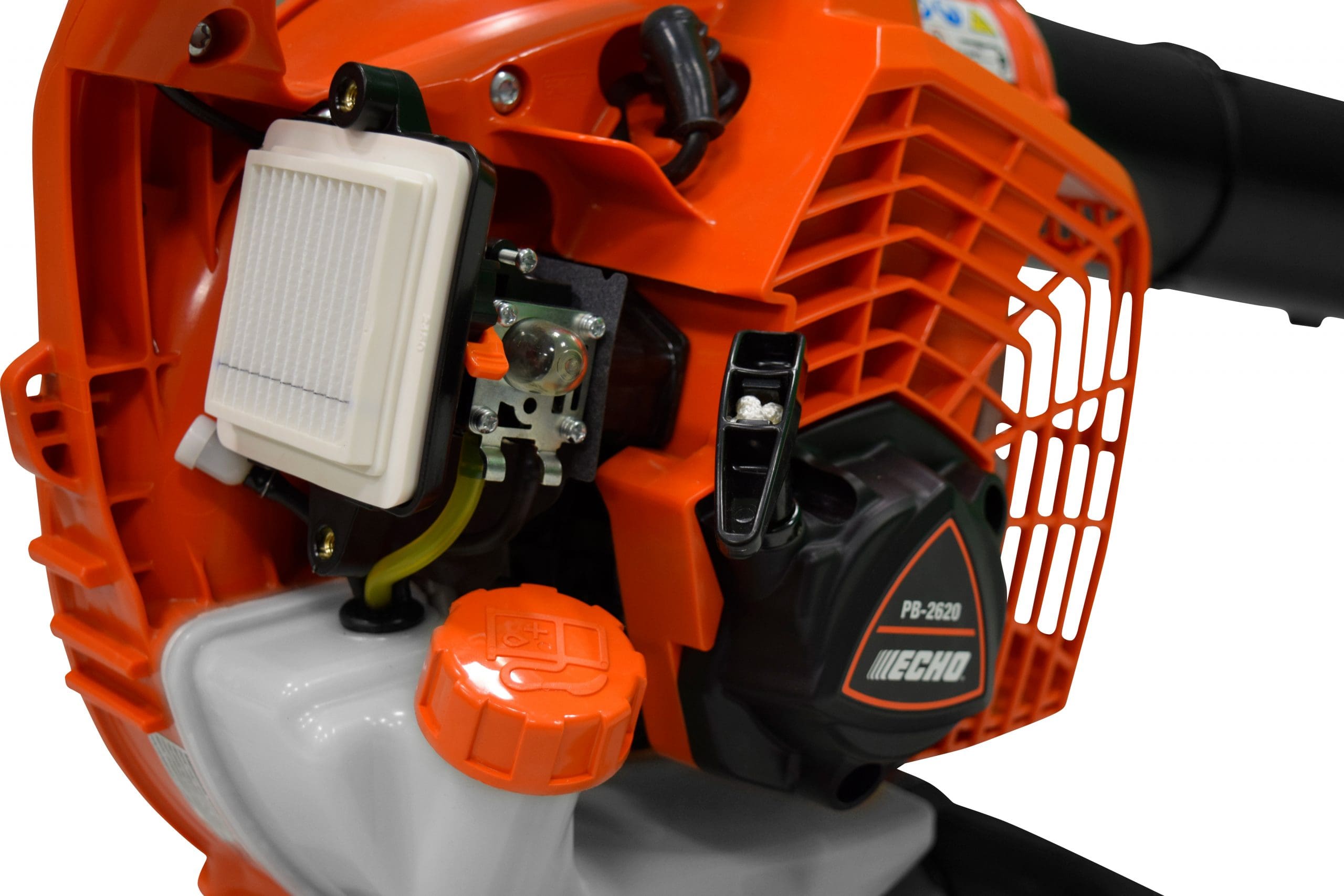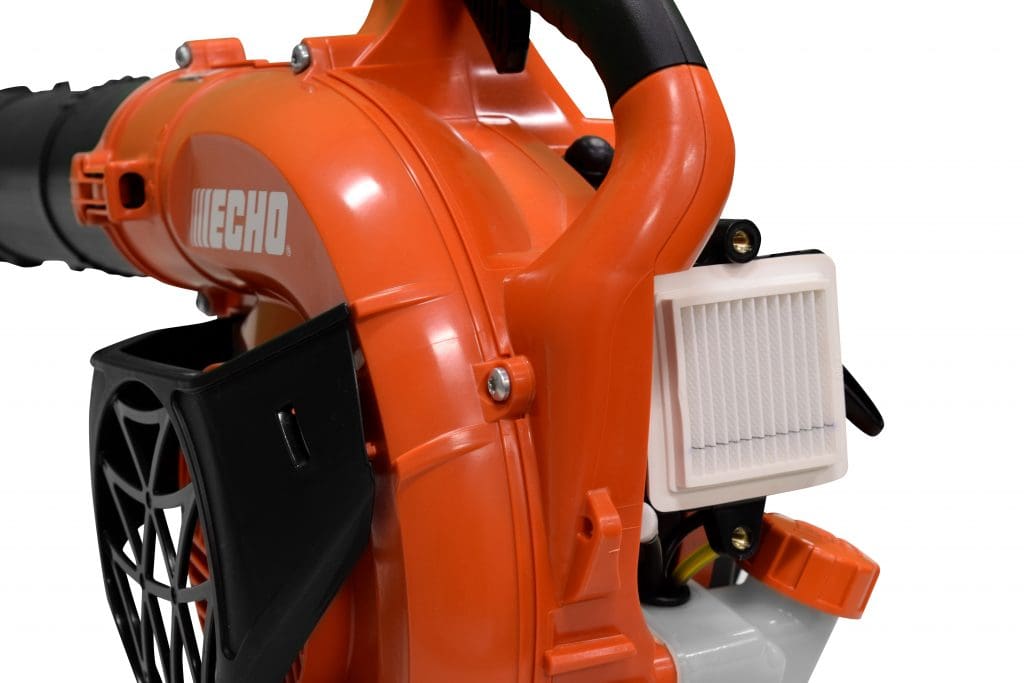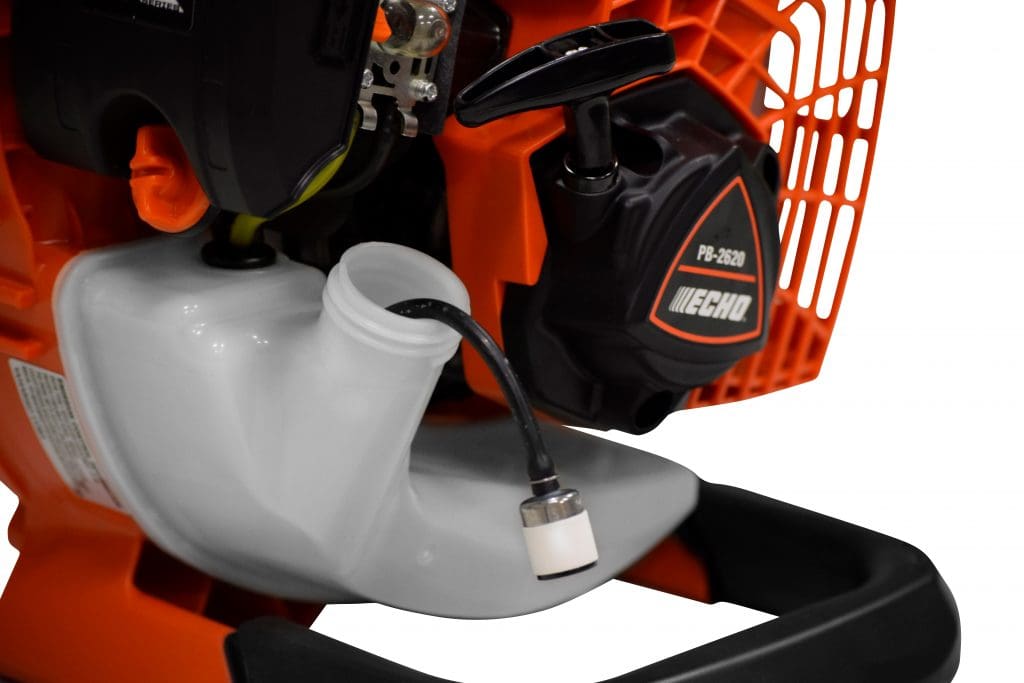
Sponsored Content
There’s no specific season when your handheld equipment is more likely to break down, but you definitely don’t want it to happen during the spring busy season.
Being proactive with your equipment maintenance is the key to preventing early wear and tear.
“Any of the products are subject to two major causes of either failure or premature wear and it is heat being the number one enemy and two being dirt,” says Jason Wilk, senior product manager for ECHO. “Regardless of if it’s a trimmer, blower, or chainsaw, anytime we can reduce the amount of heat that that engine is exposed to or the amount of dirt, primarily dirt getting into the engine, that’s good.”
Overheated engines can cause a number of problems, including causing the oil in the system to break down.
“It’s important to make sure that lubricating oil doesn’t overheat, when it does, carbon, gum and varnish deposits form inside the engine, which is one of the leading causes of failures,” Wilk says.

Photo: ECHO
One way engines can overheat is if the air intakes are blocked by debris. The other main cause of engines overheating is putting too much load on them.
Wilk says all handheld products have a method of governing the engine speed. For trimmers, the shield that trims the line ensures the engine can handle the proper load. Some operators prefer to take the shield off thinking it hinders their performance or they want to let more line out to cut more material at once.
“Once you start doing that now all of a sudden, you’re putting more load on that engine to where the more load you put on the engine, the harder that engine’s got to work,” Wilk says. “Also, the slower that engine is going to work, which is not good when you’re trying to get a fan to blow air across it. The slower the engine’s running, the less the RPMs that fan’s moving, the less cooling air you’re bringing in.”
In the case of blowers, it is the tube length and diameter that ensure the right amount of load on the engine. Adding or removing blower tubes affects the load on the engine. For those with backpack blowers who use the tube to scrape things off the ground, this can cause the tube opening to turn inwards and restrict the air stream, increasing the load. ECHO’s backpack blowers have a metal wear ring to prevent damage on the tube.
For chainsaws, most manufacturers have a recommended bar length to prevent overloading the engine.
“If you take a chainsaw that’s maybe designed for a 12 or 14 inch bar and then you go buy an accessory guide bar and you take that 14 inch bar now making a 16 or an 18 inch bar you’re putting much more cutters on to the guide bar and that engine just won’t have the power to move all those cutters through the wood,” Wilk says.
With overheating failures, the engine doesn’t overheat once and then fail. This is the result of overheating multiple times over a long period of time.
“Someone may say, ‘My trimmer I only got a season out of it,’” Wilk says. “Well, if you didn’t let that engine overheat all those multiple times or if you would have kept the shield on, you may have gotten five or six seasons out of that trimmer before it was simply worn out. It’s usually premature wear caused by gradual multiple overheating.”

Photo: ECHO
Aside from preventing overheating, you can ensure your equipment’s longevity by following the manufacturer’s maintenance guidelines.
“If you want the maximum life out of a product, the manufacturers know what makes these engines tick, what makes them wear out, how long the air filtration systems are designed to last,” Wilk says. “If you really want to maximize the life of your product, absolutely follow manufacturer’s recommendation. They know that engine inside and out.”
Wilk says he could make an engine fail in under 100 hours if he’s running it the wrong way and conducting poor maintenance. Meanwhile, an engine properly maintained according to the manufacturer’s guidelines can last 1,200 to 1,5000 hours.
Whether landscape professionals take care of the maintenance themselves or take it to a dealer is a matter of personal preference. ECHO does sell YouCan maintenance kits that come prepackaged with the necessary components such as air filters, fuel filters and spark plugs.
“The very first time someone goes to tackle that that level of maintenance it may take them 25-35 minutes,” Wilk says. “After you do it a few times you can probably knock out a tune-up within 5-10 minutes at the most.”
He encourages landscape professionals to invest in quality oil, as it doesn’t leave behind as much deposits on the engine.
“We see a lot of time where landscapers may spend $300 to $400 on a string trimmer but then they want to try to save 40-50 cents on a bottle of oil,” Wilk says. “If you’re using a low-quality oil or low cost oil a lot of time that oil doesn’t have all the extra additives to keep that oil burning clean and not cause deposits in the engine.”

Photo: ECHO
As for what maintenance task gets neglected the most, Wilk says it’s often the air filter, despite the equipment frequently being used in dusty, dirty environments. If you neglect the air filter, dirt will eventually find its way to the engine where it becomes a high-speed abrasive and drastically reduced the life of the engine.
“We actually recommend for professional landscapers who are using this product daily for 6, 7, 8 hours a day is actually before the start of your day to take that air filter out and just tap it on a table or hard surface and knock any of that material off of that air filter,” Wilk says. “You don’t need to do a whole deep dive of washing it and drying it and all that. Just knock some of that debris off and put the air filter back. If the air filter looks really nasty, we’d recommend you replace it.”
Wilk says the fuel filter can also be forgotten on handheld equipment because it is unseen in the fuel tank.
“When fuel filters get neglected and start filling up with debris that prevents how much fuel can actually go through that filter and then supply fuel and power to that engine,” Wilk says.
End users may think it’s the carburetor or the spark plug, but often it’s the clogged fuel filter. Wilk also recommends that commercial landscapers replace their spark plugs at least twice a year.
“They’re the unsung heroes of the engine,” Wilk says. “The spark plugs are subject to really high heat.”

